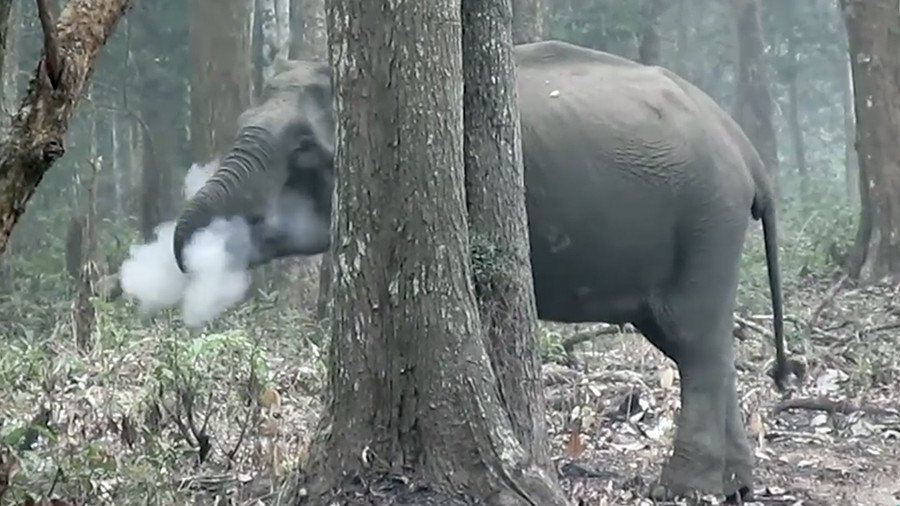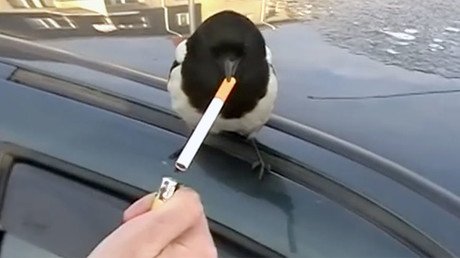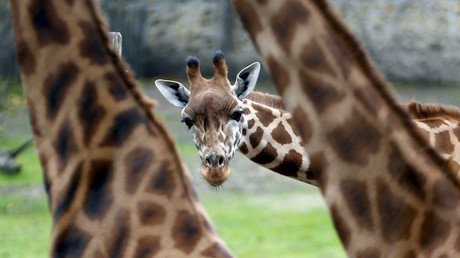Smoking elephant captured lighting up jungle cigarette (VIDEO)

Footage purporting to show an elephant smoking is perplexing viewers online. While some domesticated animals have been known to mimic such human behavior, researchers are baffled as to how the pachyderm learned to light up.
In 2016, a group of researchers was visiting and assessing camera-traps in Nagaharole National Park in India when they stumbled across the footage, which was published only recently online.
“In India, the Forest Department burns fire lines to create fire breaks that can help control forest fires,” Vinay Kumar, assistant director of the WCSs India Program told Live Science. “And this effort leaves behind wood charcoal on the forest floor.” RT.com has contacted Kumar for additional comment.
Researchers weren't immediately sure what the elephant was doing, though there are several theories including that the elephant was using the charcoal as a digestive aid. Charcoal is known to have laxative effects, though biologists haven't recorded many instances of pachyderms lighting up after a big meal to help ease the digestive process.
“I believe the elephant may have been trying to ingest wood charcoal,” said Dr. Varun Goswami, a Wildlife Conservation Society (WCS) India scientist and elephant biologist. “She appeared to be picking up pieces from the forest floor, blowing away the ash that came along with it, and consuming the rest.”
Ancient elephants & Mayan shrine: Massive underwater caves reveal staggering history (VIDEO) https://t.co/brThJpyvADpic.twitter.com/4oa9r89Eae
— RT (@RT_com) February 20, 2018
The study of animal use of medicine is called zoopharmacognosy and includes cats or dogs eating grass to help them purge, though it often extends to our primate cousins. For instance, Red colobus monkeys on the island of Zanzibar eat charcoal to settle their stomachs and prevent harm from toxic substances they may have ingested.
Bonobo monkeys in the Salonga National Park in the Congo have been observed ingesting a certain kind of rough leaf to help scour their insides and remove unwanted parasites while red and green macaws eat clay to kill bacteria. Pregnant elephants have also been seen eating a specific kind of leaf which researchers believe may accelerate the birthing process, reports Smithsonian magazine.
Like this story? Share it with a friend!














